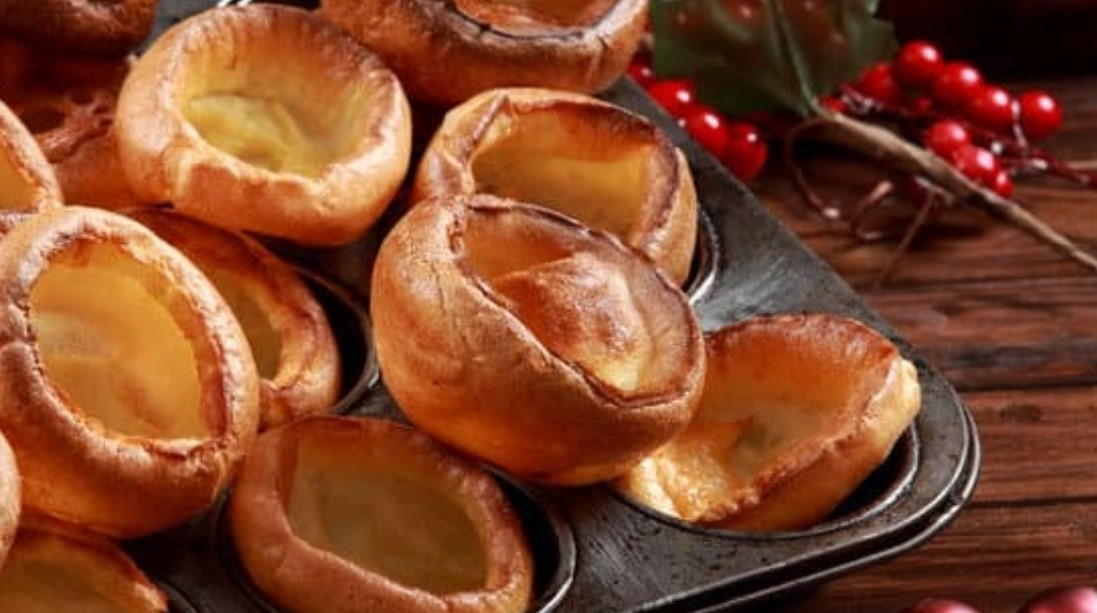Welcome to the mouthwatering world of Yorkshire puddings! These golden, crispy and oh-so-delicious treats are a quintessential part of British cuisine. Whether served alongside a Sunday roast or enjoyed as a delightful snack on their own, there’s no denying the irresistible charm of these puffy delights. If you’ve ever wondered how to make Yorkshire puddings at home, you’re in for a treat!
In this blog post, we’ll guide you through the process step-by-step, ensuring that your homemade Yorkshire puddings turn out perfectly every time. So grab your apron and get ready to impress friends and family with this classic culinary delight!
What are Yorkshire Puddings?
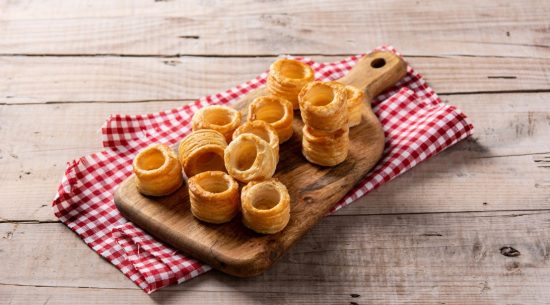
Yorkshire puddings, a traditional British delight, accompany roast beef and Sunday roasts. Crafted from a simple batter of eggs, flour, and milk or water, these treats are baked until golden brown with a crispy exterior and a soft, airy interior.
Their versatility shines as they can be served with gravy as a side dish, used as a savoury base for fillings like sausages or roasted vegetables, or even enjoyed as a dessert with sweet fillings. Originating in 18th-century Yorkshire, England, these puddings were initially cooked in meat drippings, now commonly made with vegetable oil or beef drippings, known as “pudding fat.”
With their rich history and delightful taste, Yorkshire puddings are a cherished part of British cuisine, renowned for transforming a basic roast dinner into a culinary delight.
Yorkshire Pudding Ingredients
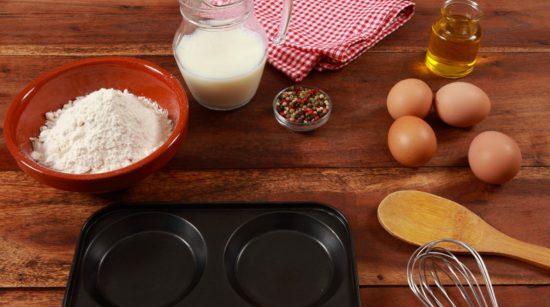
When it comes to making the perfect Yorkshire puddings, having the right ingredients is key. Here’s a breakdown of what you’ll need:
- Flour: Start with all-purpose flour for that light and airy texture. Make sure it’s sifted to remove any lumps.
- Eggs: The eggs are essential for binding the ingredients together and giving your pudding structure. Use large eggs at room temperature for best results.
- Milk: Whole milk works best in this recipe, but you can also use semi-skimmed if you prefer a slightly lighter pudding.
- Salt: Just a pinch of salt will enhance the flavours and balance out the sweetness of the batter.
- Oil or fat: Traditionally, beef dripping or lard grease the baking tin, but vegetable oil or butter also works well.
- Optional extras: If you want to add some extra flavour, consider adding herbs like thyme or rosemary or even grated cheese for a cheesy twist!
Remember that using high-quality ingredients will always yield better results in your cooking endeavours! Experimenting with different variations and flavours can be fun, too! Stay tuned for our next blog section on how to make these delicious treats from scratch!
Equipment You Need
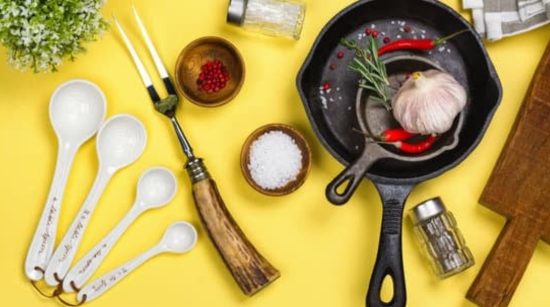
To master the art of Yorkshire puddings, ensure you have the following essential equipment:
- Muffin Tin or Yorkshire Pudding Pan: Provides the signature shape and ensures even cooking.
- Mixing Bowl and Whisk: Essential for combining batter ingredients.
- Measuring Jug: Aids inaccurate measurement, especially for milk.
- Sieve: Useful for sifting flour into the mixture, preventing lumps.
- Oven: Preheat your oven to a high temperature for proper rising.
Having these basic tools ready streamlines your journey to perfecting Yorkshire puddings. Now, let’s delve into the steps of creating these delectable treats!
How to Make Yorkshire Puddings?
Yorkshire puddings are a classic British dish that is loved by many. These light and fluffy baked treats are the perfect accompaniment to a roast dinner or can even be enjoyed on their own as a tasty snack.
To make Yorkshire puddings,
STEP 1: Preheat your oven to a high temperature, around 220°C (425°F) or as directed by the recipe you’re using.
STEP 2: In a mixing bowl, whisk together 125 grams (1 cup) of all-purpose flour and a pinch of salt.
STEP 3: Make a well in the centre of the flour and crack in two large eggs. Whisk the eggs into the flour gradually, incorporating them fully before adding any liquid.
STEP 4: Slowly pour in 250 millilitres (1 cup) of milk while continuing to whisk the mixture. This will create a smooth batter without any lumps.
STEP 5: Once the batter is well combined, let it rest for about 30 minutes at room temperature. This helps to activate the gluten in the flour, resulting in a lighter Yorkshire pudding.
STEP 6: While the batter rests, place a small amount of vegetable oil or beef drippings into the cups of a muffin tin or a large baking dish. Put the tin or dish in the preheated oven for about 10 minutes, allowing the fat to get hot.
STEP 7: Carefully remove the tin or dish from the oven and quickly pour the batter into each cup, filling them about halfway. The hot fat will help the puddings rise and become crispy.
STEP 8: Place the tin or dish back in the oven and bake for approximately 20-25 minutes or until the puddings are puffed up and golden brown. Try to resist opening the oven door during baking, as this could cause the puddings to collapse.
STEP 9: Once baked, remove the Yorkshire puddings from the oven and serve them immediately while they’re still hot and fluffy. They go wonderfully with roast beef, gravy, or any other accompaniment of your choice.
Remember, the key to successful Yorkshire puddings is to have a hot oven, a well-rested batter, and hot fat in the tin or dish. With a little practice, you’ll be able to create these delightful puffs of goodness to enjoy with your favourite roast dinner!
| Steps | Instructions |
| 1 |
Preheat oven to 220°C (425°F) or as recipe directs.
|
| 2 |
Whisk 125g (1 cup) flour and a pinch of salt in a bowl.
|
| 3 |
Make a well, add 2 eggs, whisk gradually into flour.
|
| 4 |
Slowly whisk in 250ml (1 cup) milk for a smooth batter.
|
| 5 |
Rest batter for 30 mins at room temp to activate gluten.
|
| 6 |
Preheat oiled muffin tin in the oven for 10 mins.
|
| 7 |
Pour batter into hot tin, filling halfway; fat helps rise.
|
| 8 |
Bake for 20-25 mins until puffed and golden; avoid opening oven.
|
| 9 |
Serve hot with roast beef, gravy, or preferred accompaniments.
|
Yorkshire Puddings Nutrition Chart
When enjoying Yorkshire puddings, it’s helpful to be mindful of their nutritional content. Here is a general overview of the nutrition values per serving (1 pudding), prepared using traditional ingredients:
- Calories: 150
- Total Fat: 10g
- Saturated Fat: 3g
- Cholesterol: 50mg
- Sodium: 200mg
- Total Carbohydrates: 11g
- Dietary Fiber: 0.5g
- Sugars: 1g
- Protein: 4g
It’s essential to keep in mind that these values are approximate and can vary based on the specific ingredients and cooking methods used. Being aware of the nutritional content of your Yorkshire puddings can help you make informed choices about incorporating them into your diet.
Variations of Yorkshire Puddings
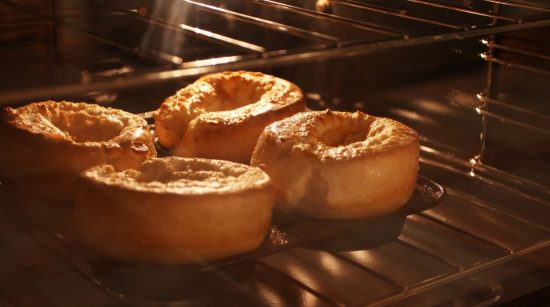
- Cheese Yorkshire Puddings: Add grated cheese, such as cheddar or Gruyère, to the batter before baking. The cheese will melt and create a savoury, gooey centre within the Yorkshire puddings.
- Herbed Yorkshire Puddings: Mix chopped fresh herbs like thyme, rosemary, or parsley into the batter for added flavour. The herbs will infuse the puddings with their aromatic notes.
- Onion Yorkshire Puddings: Sauté finely chopped onions until golden brown and mix them into the batter. The caramelized onions will bring a sweet and savoury element to the puddings.
- Mini Yorkshire Puddings: Instead of baking the batter in a large dish or muffin tin, use a mini muffin tin to create bite-sized Yorkshire puddings. They are perfect for serving as appetizers or canapés.
- Gluten-Free Yorkshire Puddings: Substitute the all-purpose flour with a gluten-free flour blend to make a gluten-free version. The results may be slightly different, but they can still be delicious!
- Pudding Wraps: Take your leftover roast beef or other meats, along with some gravy, and wrap them inside Yorkshire puddings for a tasty handheld meal. It’s a great way to utilize leftovers and create a comforting lunch or dinner option.
- Sweet Yorkshire Puddings: Instead of serving Yorkshire puddings as a savoury side, you can make a sweet version by adding sugar, vanilla extract, and even a bit of cinnamon or nutmeg to the batter. Fill them with your favourite sweet fillings, such as fresh fruits, whipped cream, or chocolate sauce.
Tips and Tricks for the Best Results
- Begin by preheating your oven to a high temperature to ensure optimal rising and a crispy exterior for your Yorkshire puddings.
- For maximum puffiness, use a hot pan by heating your muffin tin or baking dish in the oven before pouring in the batter. The immediate sizzle upon pouring enhances the rise of the puddings.
- Allow your batter to chill in the refrigerator for at least 30 minutes or overnight. This resting period relaxes gluten strands, preventing dense and heavy puddings.
- When filling the cups of the muffin tin, avoid overfilling, aiming for at most halfway. Overfilling can lead to collapse or sticking together during cooking.
- Resist the temptation to open the oven door while the puddings are baking. Sudden temperature changes can cause deflation or result in a doughy texture instead of a light and airy one.
- Serve the Yorkshire puddings immediately after taking them out of the oven while they are puffed up and piping hot. They tend to lose crispness quickly, so enjoy them promptly.
Conclusion
Now armed with the knowledge of crafting perfect Yorkshire puddings, it’s time to impress your loved ones. The key lies in the right ingredients, proper equipment, and a simple process. With practice, you’ll master this culinary delight.
Why not give it a shot? Preheat your oven, gather ingredients, and let the culinary magic unfold. Whether as a side dish or filled with savoury delights, Yorkshire puddings are versatile and always satisfying.
Once you’ve mastered the classic, feel free to experiment. Add herbs or spices, create mini versions, and explore endless possibilities. Embark on this culinary adventure – your taste buds will thank you! Enjoy making and savouring every delightful mouthful. Happy cooking!
FAQs – How to Make Yorkshire Puddings?
1. Why didn’t my Yorkshire puddings rise?
Several factors could hinder your puddings’ rise:
- Not enough heat: The oven and fat in the tins need to be scorchingly hot (around 220°C/425°F). Cold fat won’t create enough steam to lift the batter.
- Incorrect batter consistency: The batter should be smooth and pourable, like single cream. Lumps or overmixing can inhibit rise.
- Opening the oven door: Avoid peeking during baking, as cold air can deflate the puddings.
- Overfilling the tins: Fill the tins only about a third full to allow for expansion.
2. How do I prevent my puddings from being too dense?
- Ensure all ingredients are at room temperature before mixing.
- Use the correct flour-to-egg-to-milk ratio (typically equal parts).
- Don’t overmix the batter, whisk until smooth.
- Use hot fat and a hot oven for proper steam generation.
3. Can I make Yorkshire puddings ahead of time?
Yes, you can! Prepare the batter up to 24 hours in advance and store it in the refrigerator. Before baking, let it return to room temperature. However, already-baked puddings need to reheat better and become soggy.
4. Why can’t you use self-raising flour for Yorkshire puddings?
Self-raising flour already contains a raising agent, which can disrupt the delicate balance in a traditional Yorkshire pudding recipe. This can lead to an uneven rise, dense texture, and an unpleasant yeasty flavour. Stick to plain all-purpose flour for optimal results.
5. Should Yorkshire batter be thick or runny?
The batter should be smooth and pourable, resembling the consistency of a single cream. If it’s too thick, it won’t rise properly. If it’s too runny, the puddings might spread too much. Aim for a consistency that easily coats the back of a spoon.

